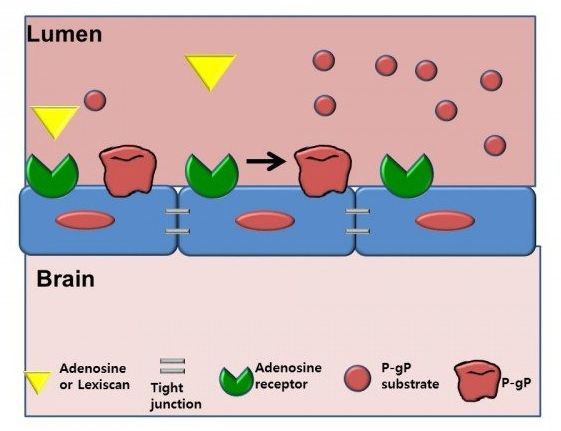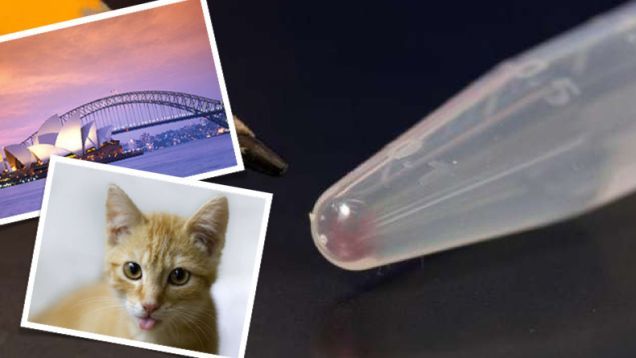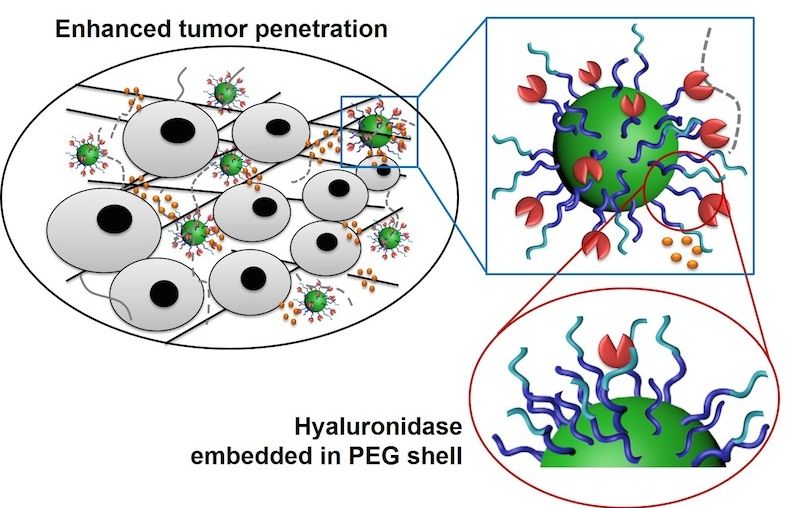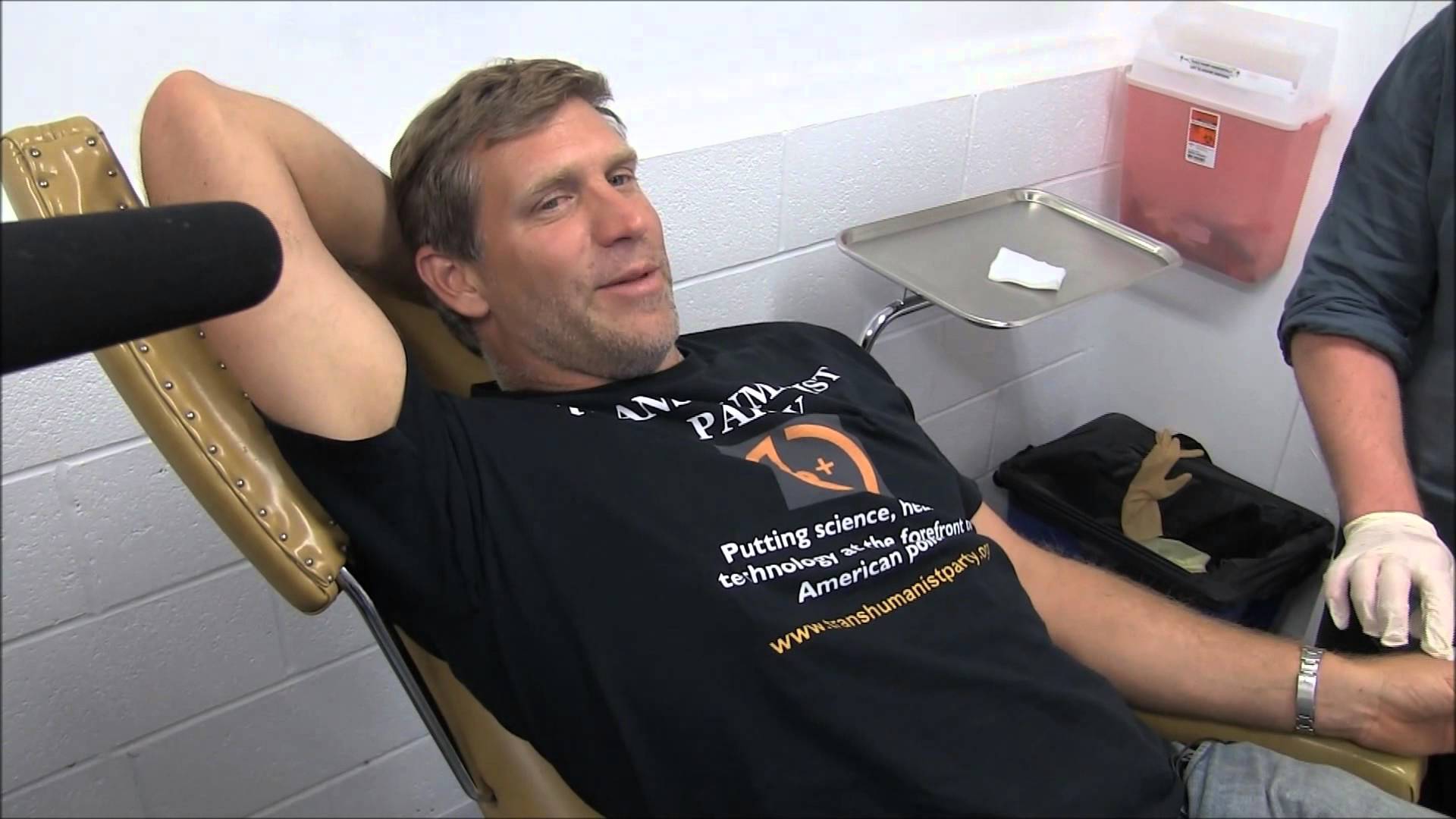The blood-brain barrier has stymied direct treatment of brain disorders. In a recently published study, a researcher reports finding a way to pass therapeutics through the barrier, using readily-available agents.


The blood-brain barrier has stymied direct treatment of brain disorders. In a recently published study, a researcher reports finding a way to pass therapeutics through the barrier, using readily-available agents.

Who needs memory cards when you have DNA? A team of scientists has been able to store images within the life-defining molecules then retrieve them perfectly.
Researchers from the University of Washington have been working out how to take digital files and convert them into strings of DNA that can be easily read back. Luis Ceze, one of the researchers, explains in a press release:
“Life has produced this fantastic molecule called DNA that efficiently stores all kinds of information about your genes and how a living system works — it’s very, very compact and very durable. We’re essentially repurposing it to store digital data — pictures, videos, documents — in a manageable way for hundreds or thousands of years.”

Very cool.
For more than a decade, biomedical researchers have been looking for better ways to deliver cancer-killing medication directly to tumors in the body. Tiny capsules, called nanoparticles, are now being used to transport chemotherapy medicine through the bloodstream, to the doorstep of cancerous tumors. But figuring out the best way for the particles to get past the tumor’s “velvet rope” and enter the tumor is a challenge scientists are still working out. Drexel University researchers believe that the trick to gaining access to the pernicious cellular masses is to give the nanoparticles a new look—and that dressing to impress will be able to get them past the tumor’s biological bouncers.
Targeted cancer therapy is most effective when the medication is released as close as possible to the interior of a tumor, to increase its odds of penetrating and killing off cancerous cells. The challenge that has faced cancer researchers for years is making a delivery vehicle that is sturdy enough to safely get the medication through the bloodstream to tumors—which is no smooth ride—but is also lithe enough to squeeze through the tumor’s dense extra cellular space—a matrix stuffed with sugars called hyaluronic acid.
In research recently published in the journal Nano Letters, lead author Hao Cheng, PhD, an assistant professor with an appointment in Drexel’s College of Engineering, and affiliation with School of Biomedical Engineering, Science and Health Systems; reports that the way to get past the tumor’s front door has everything to do with how the tiny particle is suited up for the journey.

Nanomedicine has been something that many in tech expected to be a critical part of the healthcare landscape for over a decade. I am glad to see how quickly the technology is being adopted as part of bio-medical research and treatments for various diseases, etc.
NEW YORK, April 7, 2016 /PRNewswire/ — Nano-based science paving the precision medicine era.
The continued development of new treatments associated with the demographic trends and public health considerations is remarkable. Nanotechnology has been identified as one most relevant key enabling technologies of the last ten years, significantly impacting on many different biomedical developments in a broad spectrum of applications therapeutics, diagnostics, theranostics, medical imaging, regenerative medicine, life sciences research and biosciences, among many others. In fact, nanomedicine is present in all therapeutic areas, exhibiting a perceptible and extensive impact in the treatment and diagnosis of some most concerned diseases.

Aluminum gallium nitride UV-C LED devices fabricated with novel epitaxial techniques show improved efficiency and have longer operating lifetimes.

In the pages of comic books and on the silver screen, superheroes like Wolverine and Deadpool have a “healing factor” that allows their bodies to regenerate and recover from injuries or illness at an amazing rate – but certainly nothing like that is possible in real life, right?
Amazingly, a team of scientists led by John Pimanda, a hematologist and associate professor at the University of New South Wales in Australia, published a study in Monday’s edition of the journal PNAS reporting that they had successfully reprogrammed bone and fat cells into induced multipotent stem cells (iMS) – the first step to making such a repair system a reality.
As they explained in a statement, stem cell therapies using iMS cells could theoretically repair a fractured bone or fix injured spinal discs, using a technique similar to how salamanders are able to regenerate lost limbs. These treatments could radically alter the field of regenerative medicine, and perhaps most surprisingly, the authors believe they could be available in just a few years. The technique, which has been successfully tested in mice, “is a significant advance on many of the current unproven stem cell therapies, which have shown little or no objective evidence they contribute directly to new tissue formation,” Pimanda said.
#SyntheticBiology: Robotic lab to custom-make synthetic bacteria.
Imperial College opens UK’s first robotic lab that automates the creation & rebooting of bacteria custom-made to produce pharmaceuticals and other materials. The robots will automate the synthesise of complete DNA strands, which consists millions of base pairs, and transplant entire genomes into bacteria chassis.
H/T: @CSERCambridge

My new article for The Hufffington Post on whether transhumanism will change racism in the near future:
 A future transhumanist? — CCO Public Domain
A future transhumanist? — CCO Public Domain
Despite decades of progress, racism and bigotry are still prevalent in the United States. Often, they even dominate the news in American media, like during the Baltimore riots or the Ferguson shooting. Movements like Black Lives Matter remind us that the society we live in still has many biases to be fought against, but that good work can be done to combat bigotry if people unite against it.
Despite this, the quest to find true equality in the world is about to get more complicated. It’s possible the ability to completely change skin color may arrive in the next 15–30 years. Like a chameleon, expect humans to literally change their skin color soon through coming technologies—most that will probably be based on genetic editing.
Already, humans have the technology to change the color of eyes and choose the sex of their offspring. But on the horizon are new techniques—based on CRISPR technology—that may permanently or temporarily alter the melanin in our skin (the pigment mostly responsible for its color). And like some characters in the X-Men film series, we may even be able to do this in real-time someday.

Nick Walker, an innovation scientist looking to stem cells for an HIV cure, has won the South African edition of the Singularity University Global Impact Competition (GIC), and with it the chance to attend a 10-week course at the prestigious innovation institution.
The scientist currently works at Next Biosciences, Africa’s leading stem cell laboratory and cryogenic biobank, based in Johannesburg, South Africa.
Walker completed his BSc, BSc (Hons, Cum Laude) and PhD at the University of KwaZulu-Natal in Pietermaritzburg. In his PhD work he focussed on the role of the extracellular matrix (ECM) on various aspects of myogenesis.

Agree; this is our future.
Almost ten years ago, Freeman Dyson ventured a wild forecast:
“I predict that the domestication of biotechnology will dominate our lives during the next fifty years at least as much as the domestication of computers has dominated our lives during the previous fifty years.”